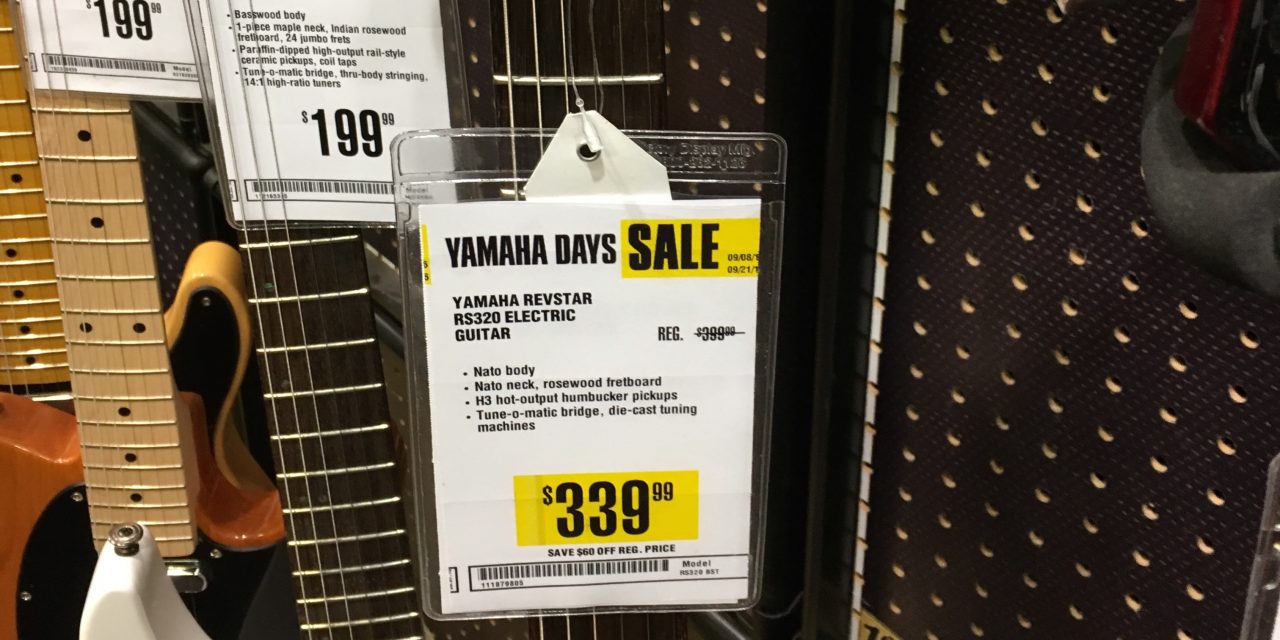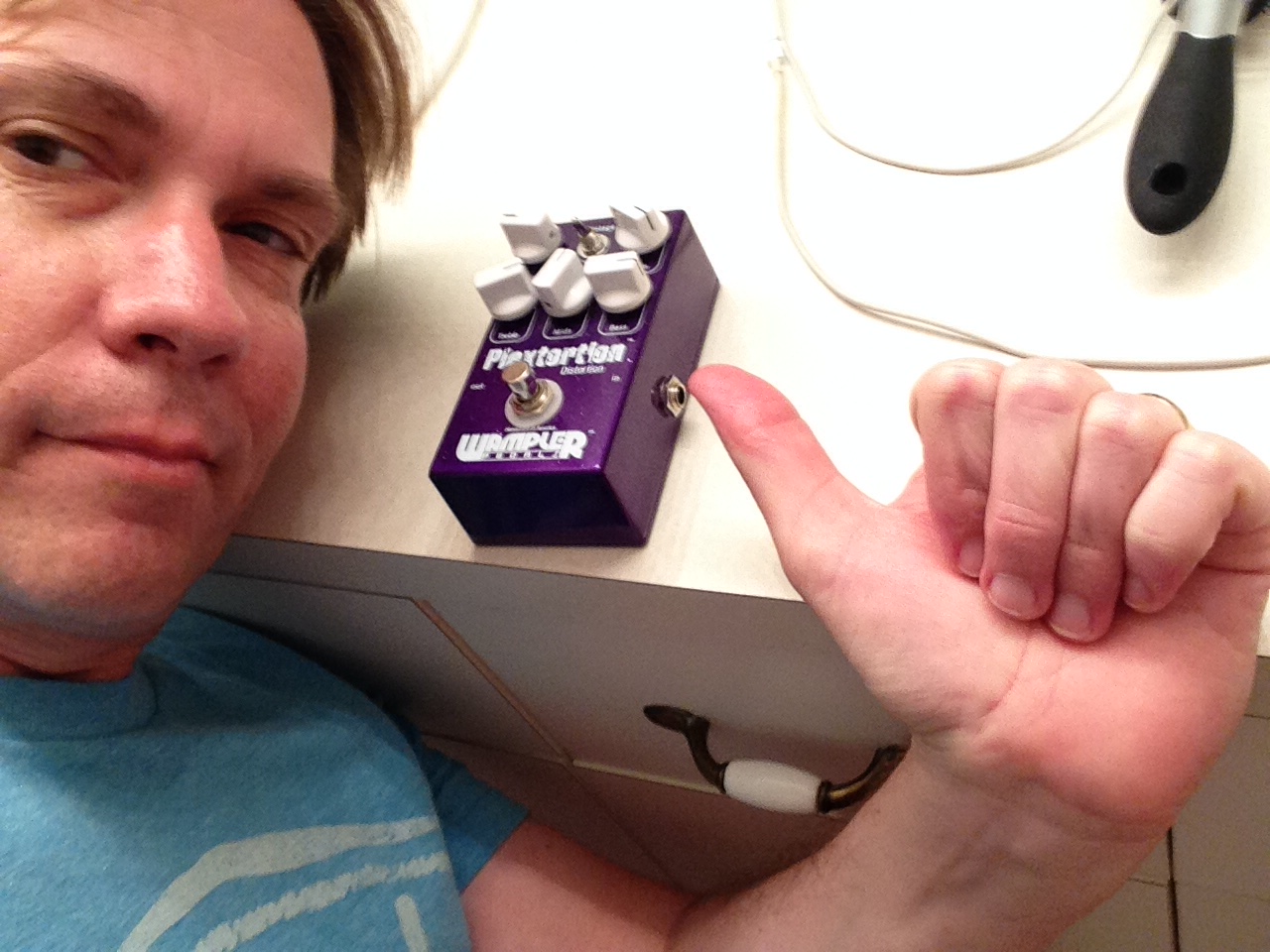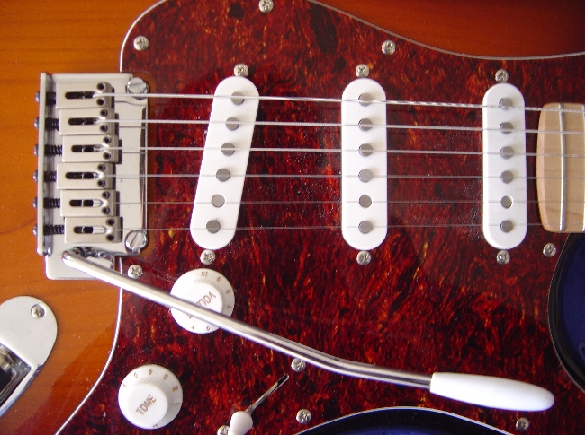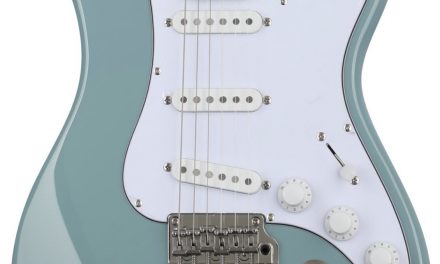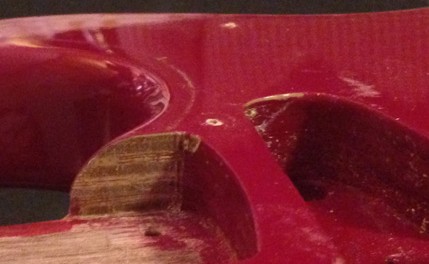Yesterday I went to the best Guitar Center in the area (Tampa Guitar Center) and performed a shootout – The new Mitchell MS400BK ($399) against the Yamaha Revstar RS320 ($399 normally, in sale for $339.)
And the shootout was OVER before it started because the Mitchell was unplayable. No, really. The setup on the guitar was so bad I couldn’t stand playing it. The G and B strings were both too low and buzzed on every fret. Shootout winner = Yamaha Revstar RS320.
Mitchell MS400BK
Oh, OK, I’ll go a little deeper. The Mitchell MS400BK is a good looking guitar for the money with some pretty nice appointments – the wood-style binding looks fantastic, the finish was great, the nut was GraphTech and the tuners were high enough quality that you wouldn’t need to replace them. I am not sure about the pickups – they sounded a little muffled to my ears. But that’s what you get in this price range. I liked the feel of the neck, and in general I wanted to like the guitar. Unfortunately I did not bring my work bench with me, or even a hex wrench so I could raise the two strings up enough to play the thing (hmm, not a bad idea for next time.)
But couldn’t I at least play the lower strings and the high E? At least to get a feel? I did. It played pretty well. Properly set up, this guitar is probably decent for the money. But are there better guitars for $399? Yes. And one of them is the…
Yamaha Revstar RS320
In terms of looks, the Yamaha Revstar RS320 has none. The headstock is dorky, the body shape is generic, the poly black finish is just there, and in general it’s a boring looking guitar. But it plays great and it sounds good. I have a soft spot for workman-like guitars and this is one of them. No fancy anything – just a good solid guitar that will get the job done. To my ears it sounded better than the Mitchell. It sounded bigger. It is bigger, so that might be part of it. The pickups sounded good not great. If I had $399 to buy a humbucker guitar, I’d seriously consider… no, I wouldn’t. I’d find something used. But if I had to pick a new $399 humbucker guitar, I’d…. no, I probably wouldn’t – I’d find a good deal on a closeout Epiphone Les Paul.
Maybe I don’t like it all that much after all. But it did sound better than the Mitchell.
So?
The Mitchell line reminds me of the Jay Turser line. They both take the Epiphone approach of making inexpensive guitars that look amazing. Looks do matter, a lot. If you love to look at your guitar, you’re more likely to play it. That’s why I hang mine on the walls. The Mitchell wins in that department. The Yamaha reminds me of the double cutaway Ibanez guitars that you see used all the time for a hundred bucks – it’s boring, but it plays good and sounds good. So if you buy a Mitchell and set it up (or pay for a setup,) you have a great looking guitar that plays and sounds decent.
I think.
Here’s what’s bugging me. All guitars are set up at the factory. And almost all guitars go from the factory to some distribution center to some warehouse to some big box guitar store like Guitar Center. And almost all of them are from China or Korea or some other remote land where the labor is cheap. So why was this thing so bad out of the box? There are two theories – it could have been set up badly at the factory, or it could have been set up properly but the wood expanded slightly in the heat during the journey from factory to store. That’s more likely. So what does that say about the wood?
I want to learn more about that theory. I could be wrong, but if so, what IS the reason the thing was so far off? I can’t speak for the other Mitchells in the line, but I’ll be playing those next.

